It is easy to understand why the Batu Caves are one of Kuala Lumpur ‘s main attractions: they are spectacular, easy to get to, and inexpensive. A Hindu sanctuary par excellence, we could say that outside of India it is one of the most important, if not the most important.
This temple complex, dedicated to Murugan, son of Lord Shiva and the Goddess Parvati, rises almost 100 metres above ground level and consists of three main caves and a few smaller ones. There are ten temples dedicated to Murugan, six of them are located in India and four in Malaysia, the other three in the country being the Kallumalai Temple in Ipoh, the Tanneermalai Temple in Penang, and the Sannasimalai Temple in Malacca.

At the base of the hill are two more cave temples, the Art Gallery Cave and the Museum Cave, which are filled with Hindu statues and paintings. The Batu Caves complex was renovated and opened in 2008. Many of the shrines reflect the story of Murugan’s victory over the demon Soorapadman.
The Batu Caves are made of limestone rock dating back some 400 million years. Some of the cave entrances were used as shelters by the indigenous Temuan people (a tribe of Orang Asli); the Orang Asli are said to be the genuine indigenous people of Malaysia, as the Malays actually come from Indonesia.
Around 1860, Chinese settlers began digging grain to fertilize their vegetable crops. In 1878 the American naturalist William Hornaday, assisted by Daly and Syers, the English authorities of the time, documented that the caves were from colonial times.
Batu Caves was promoted as a place of worship by K. Thamboosamy Pillai, an Indian merchant. He was inspired by the candle-shaped entrance of the main cave and dedicated a temple to Murugan within the caves. In 1890, Pillai, who also founded the Sri Mahamariamman Temple in Kuala Lumpur, installed the murti (enshrine statue) of Sri Murugan Swami in what is now known as the Temple Cave. Since 1892, the Thaipusam festival has been celebrated there.
On the way to the Ramayana Cave, i.e. on the left as you exit the train station, there is a 15-metre-high statue of Hanuman and a temple dedicated to Rama. It is one of the large statues in the Batu Caves complex and you will be struck by their sheer size. The temple’s dedication ceremony was held in November 2001.
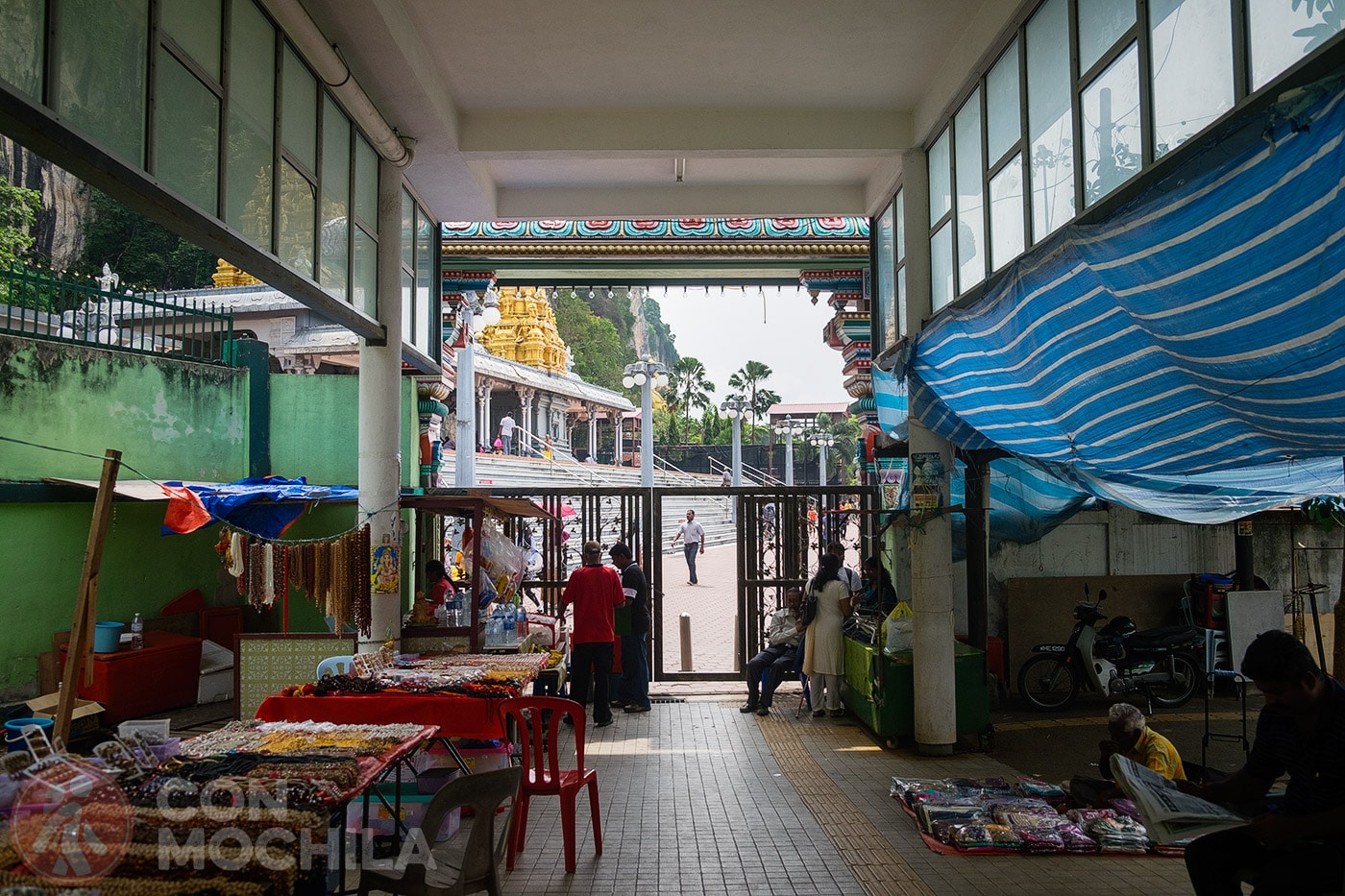
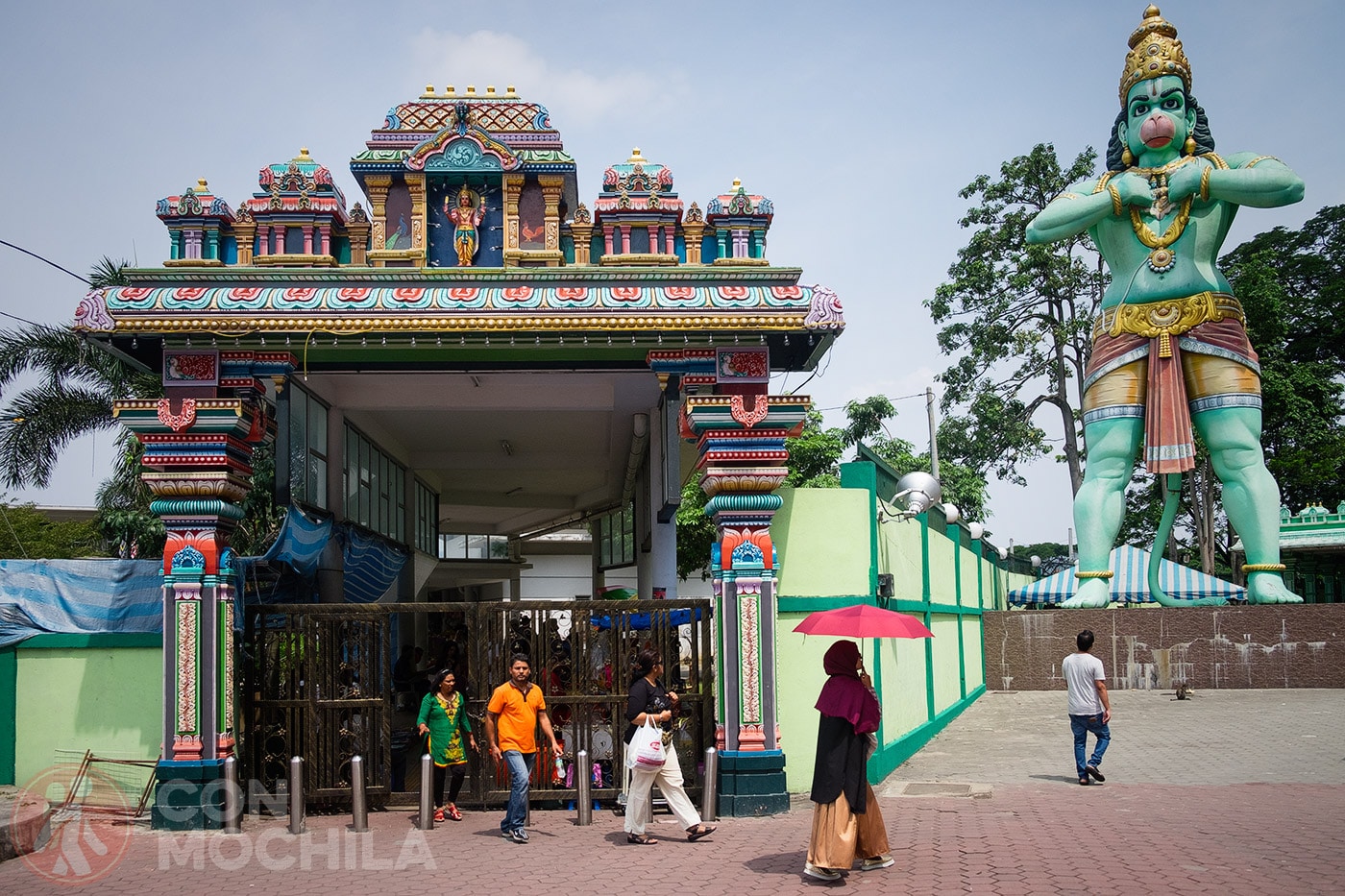
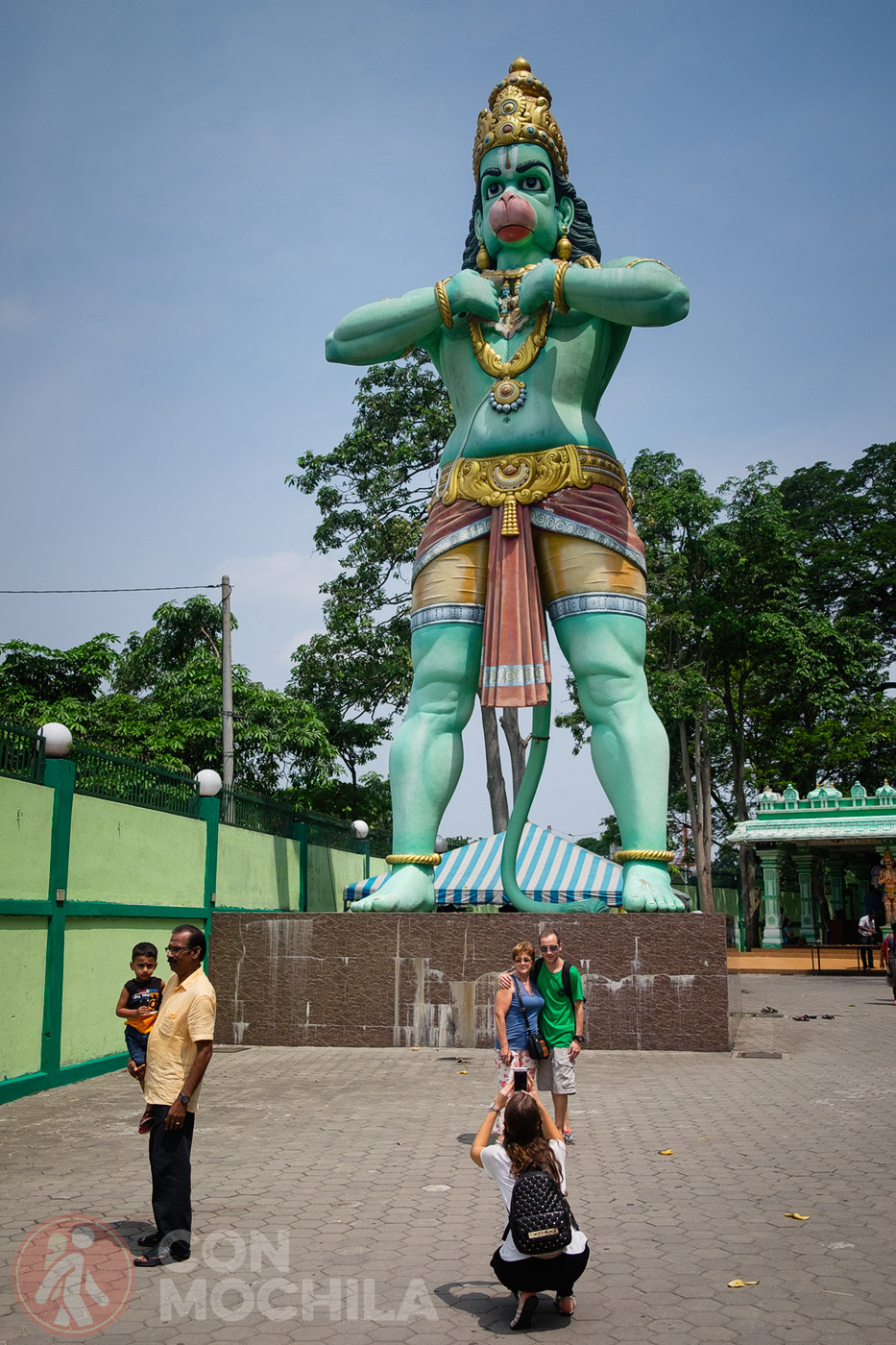
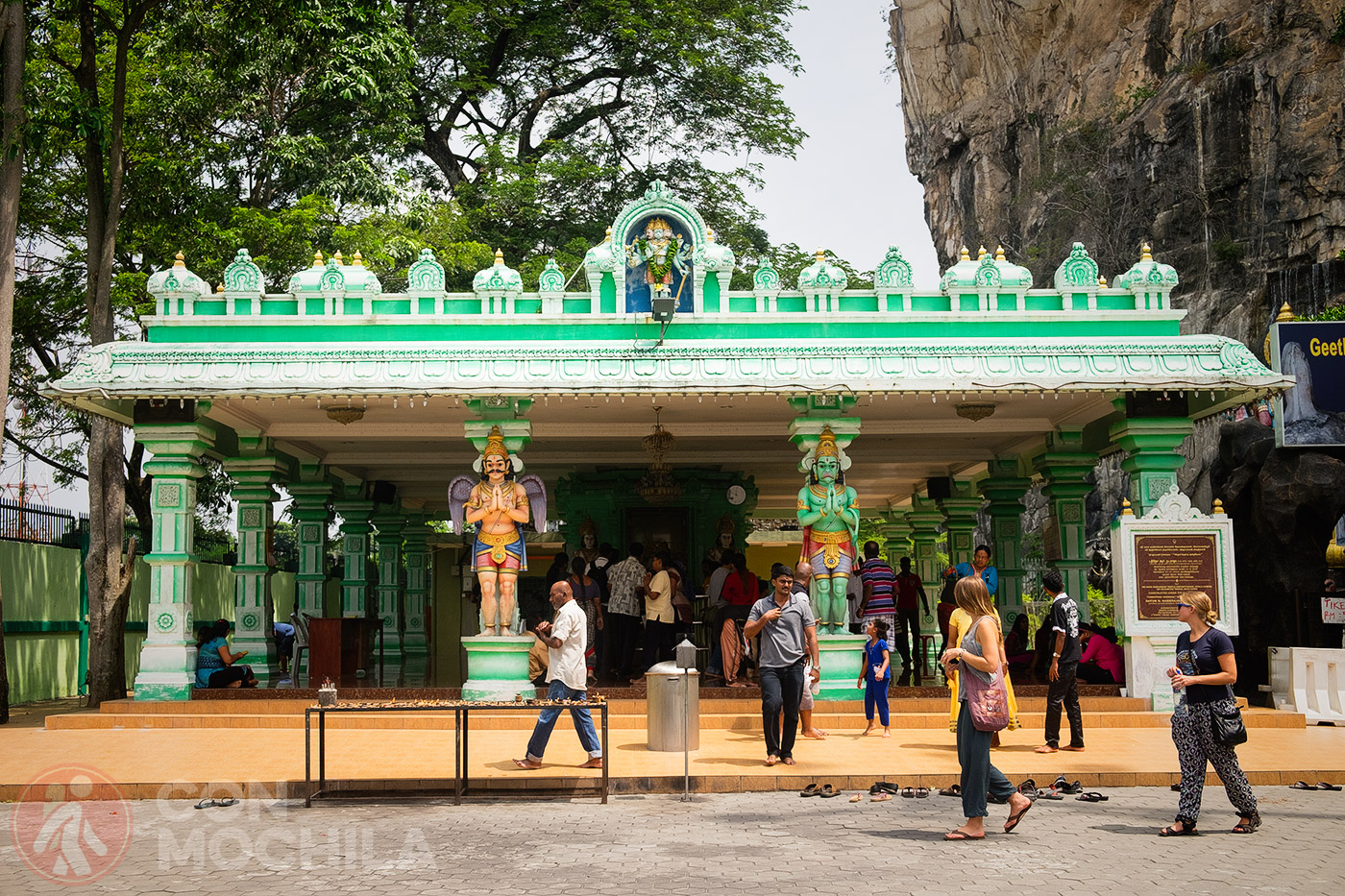
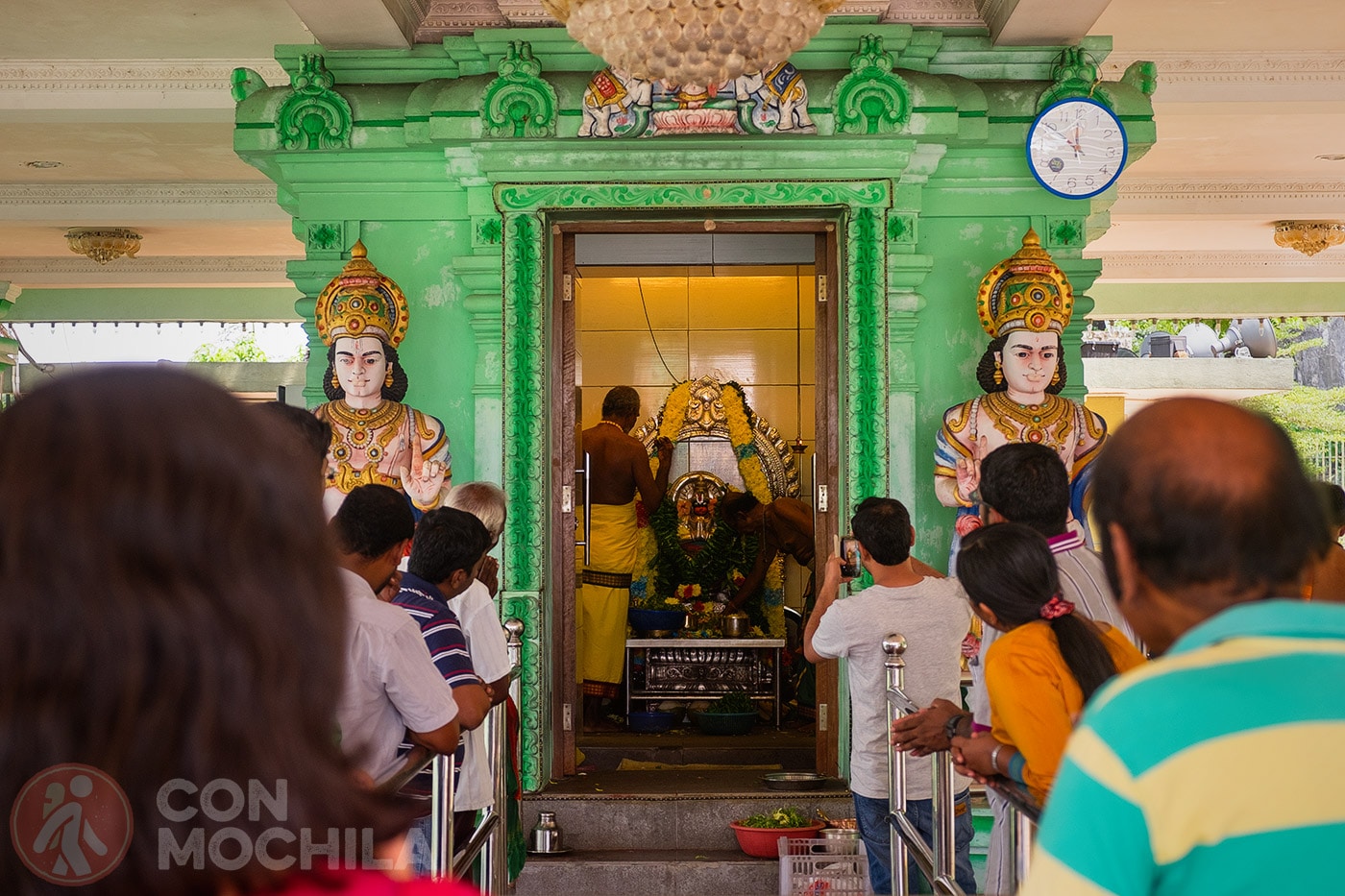
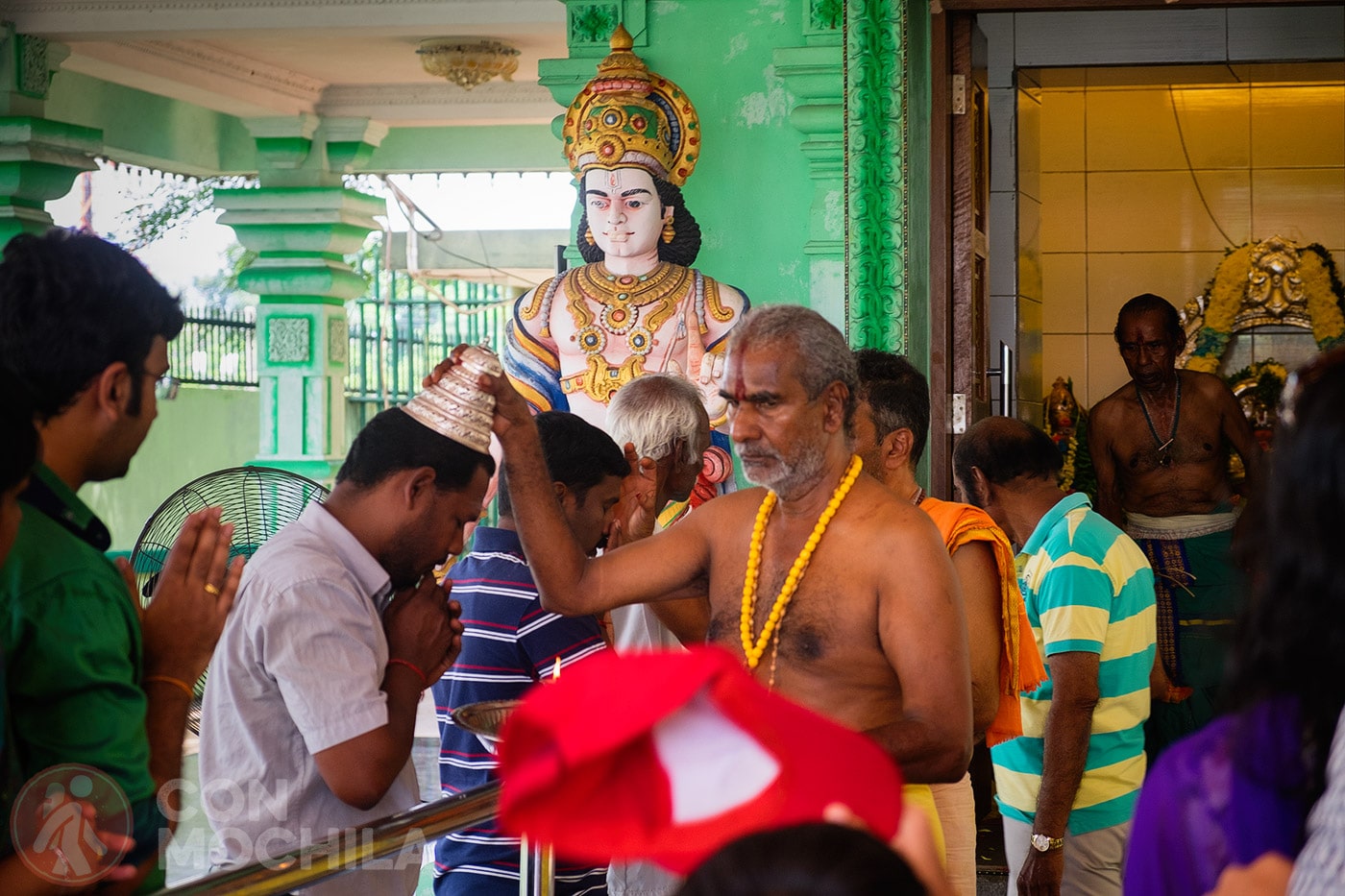
The Ramayana Cave is on the left, once you pass the statue of Hanuman. The story of Rama is depicted in figures on the irregular walls of the cave. The colour of the figures, the artificial lighting, and the good preservation make the visit to this cave worth the 5 ringgit entrance fee.
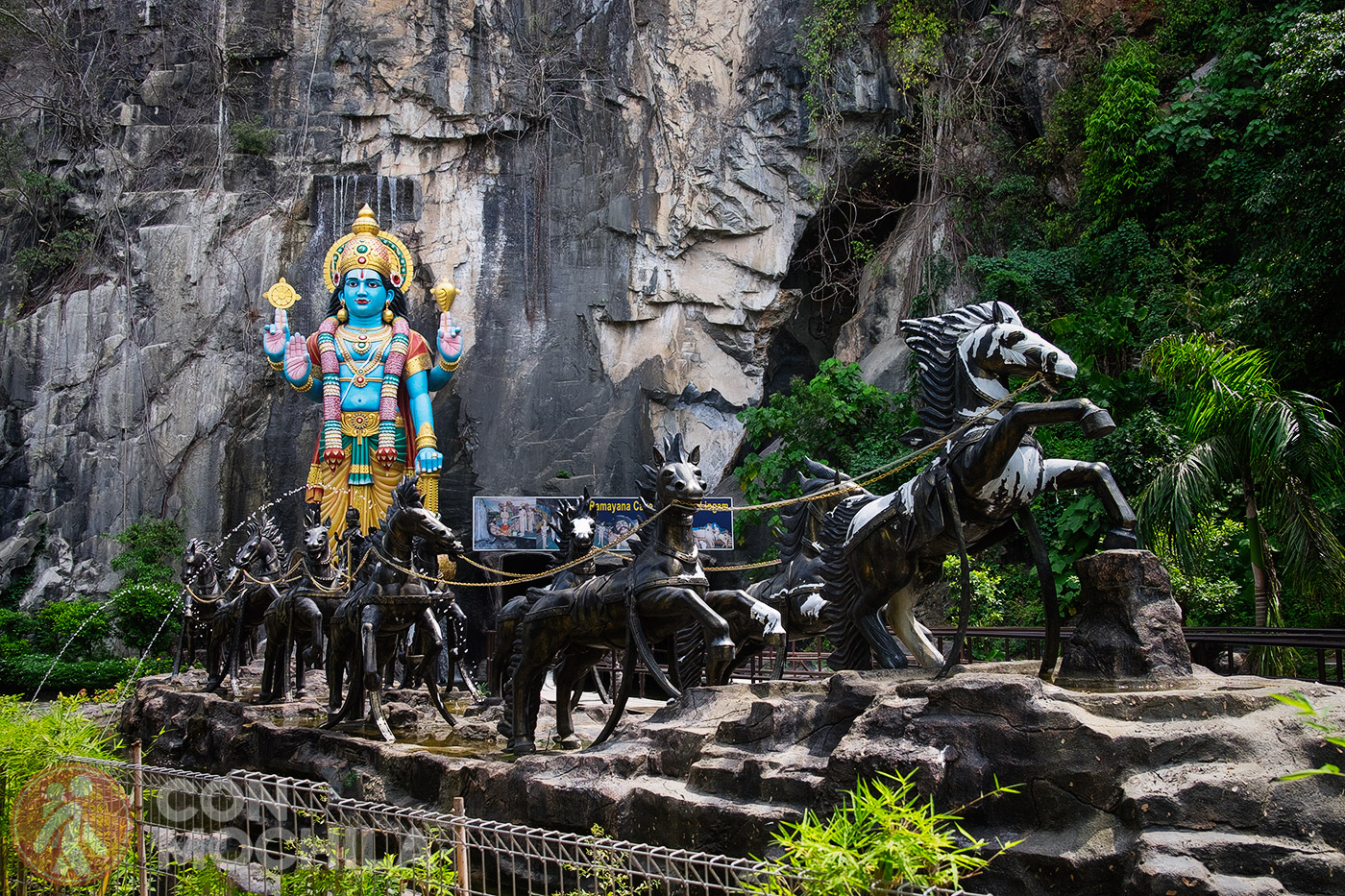
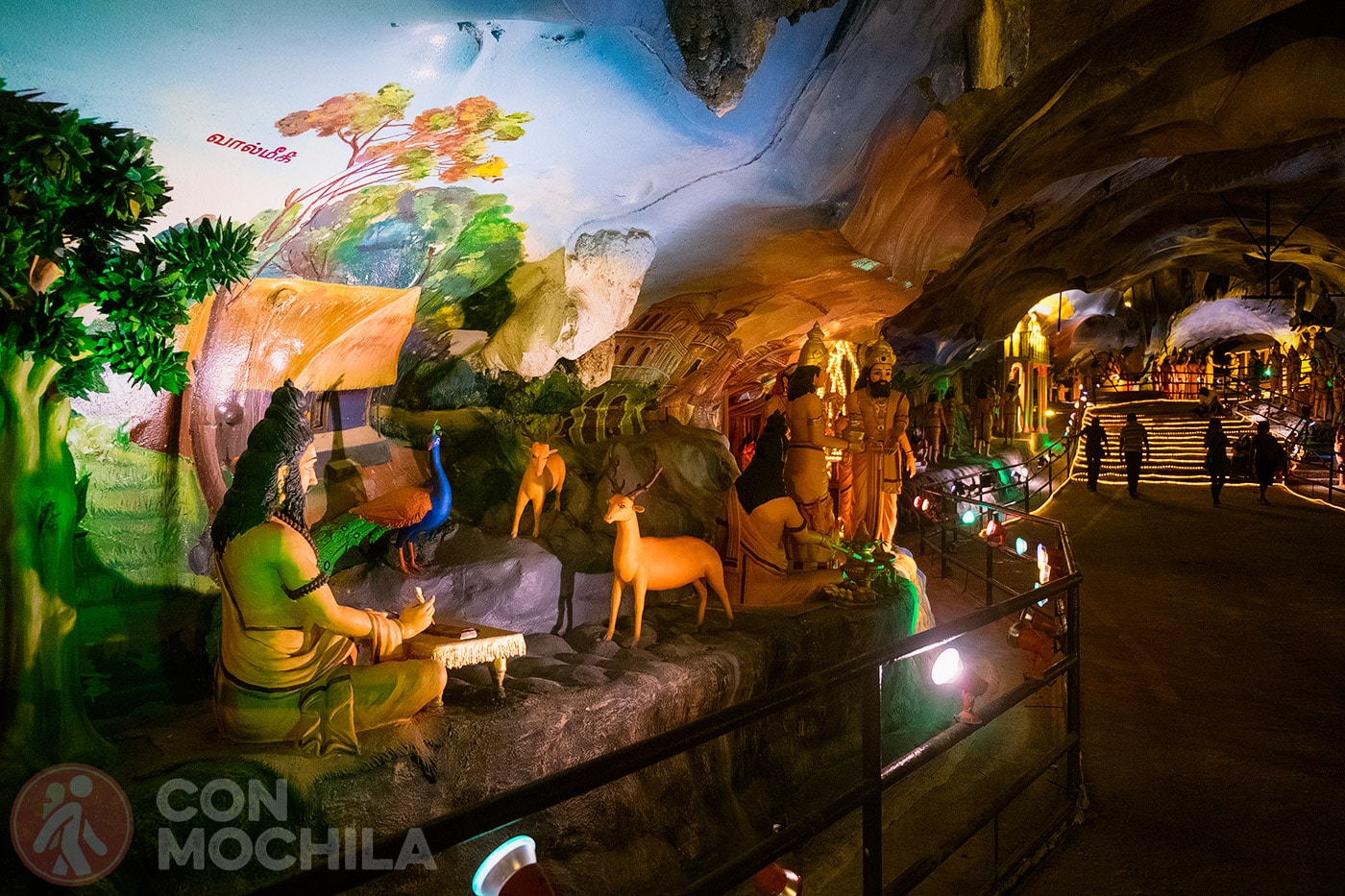
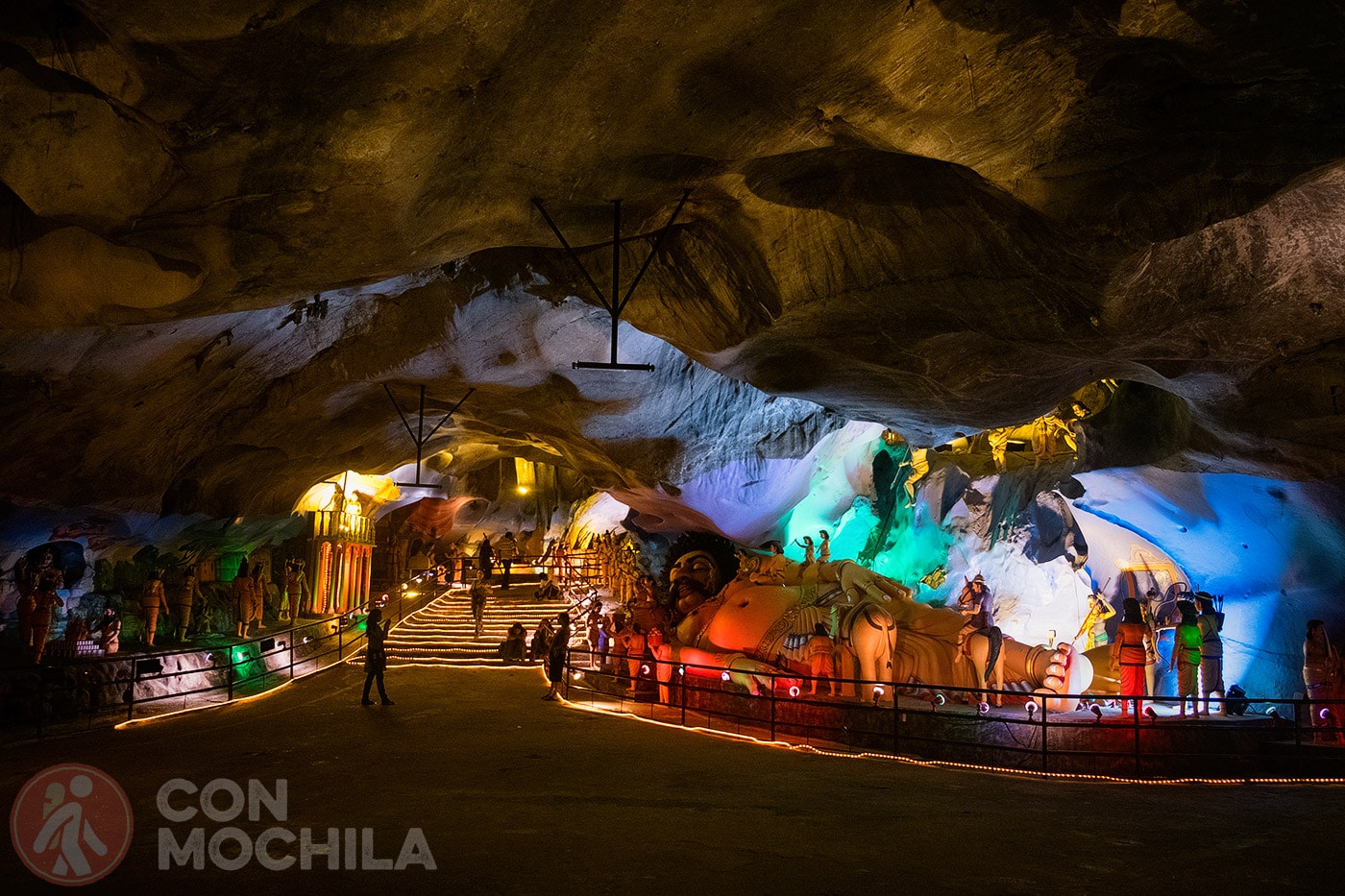
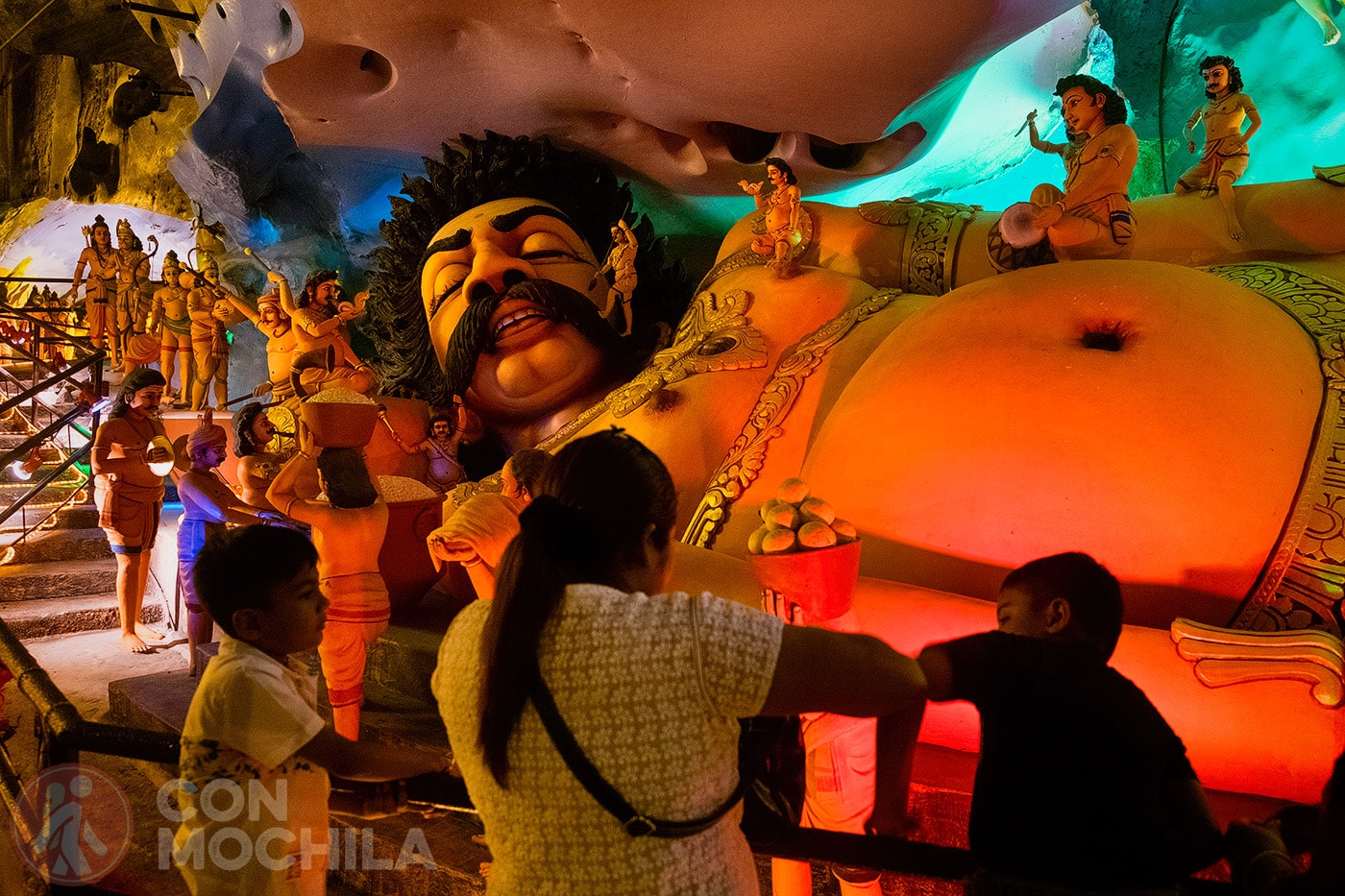
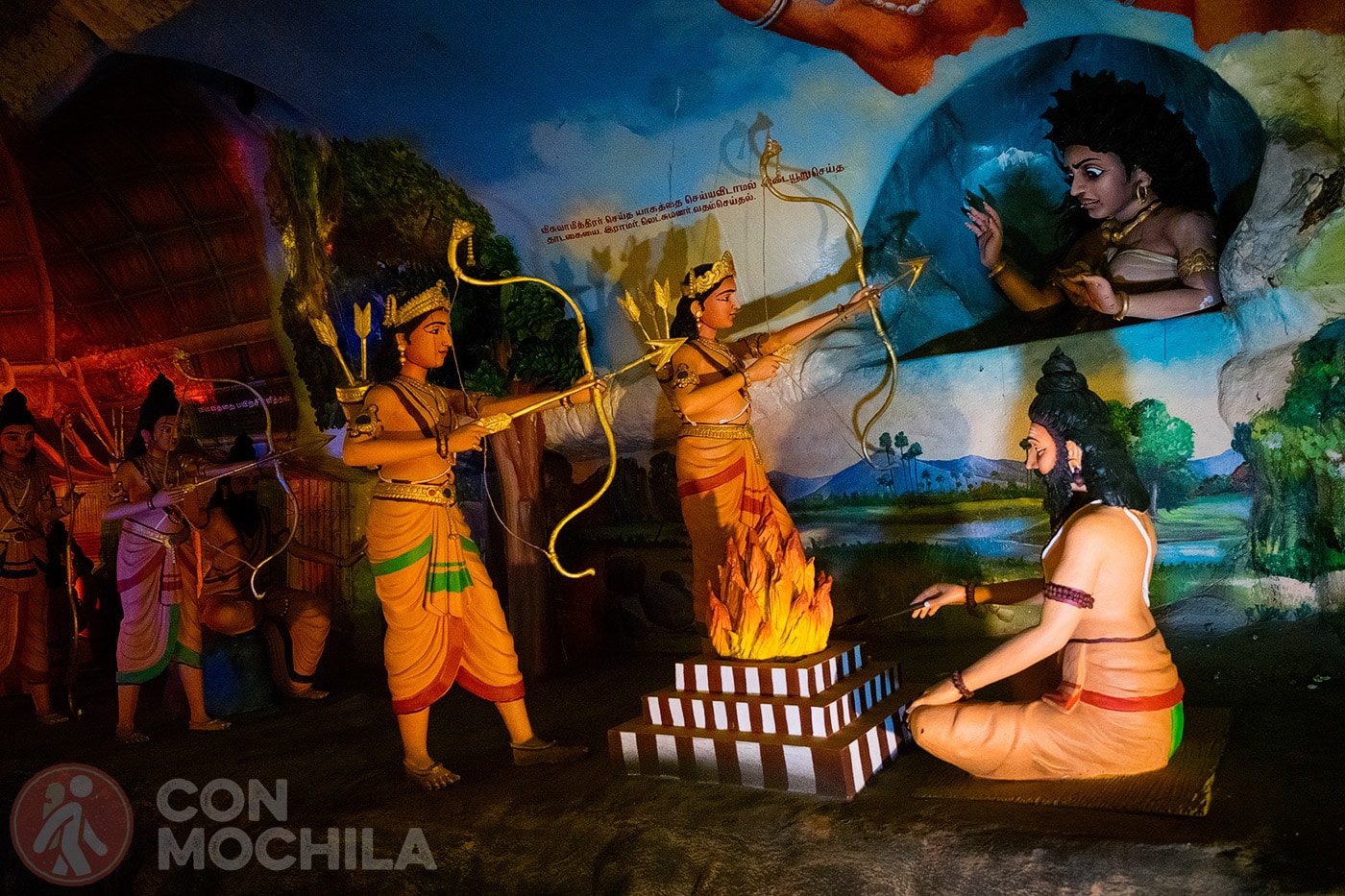
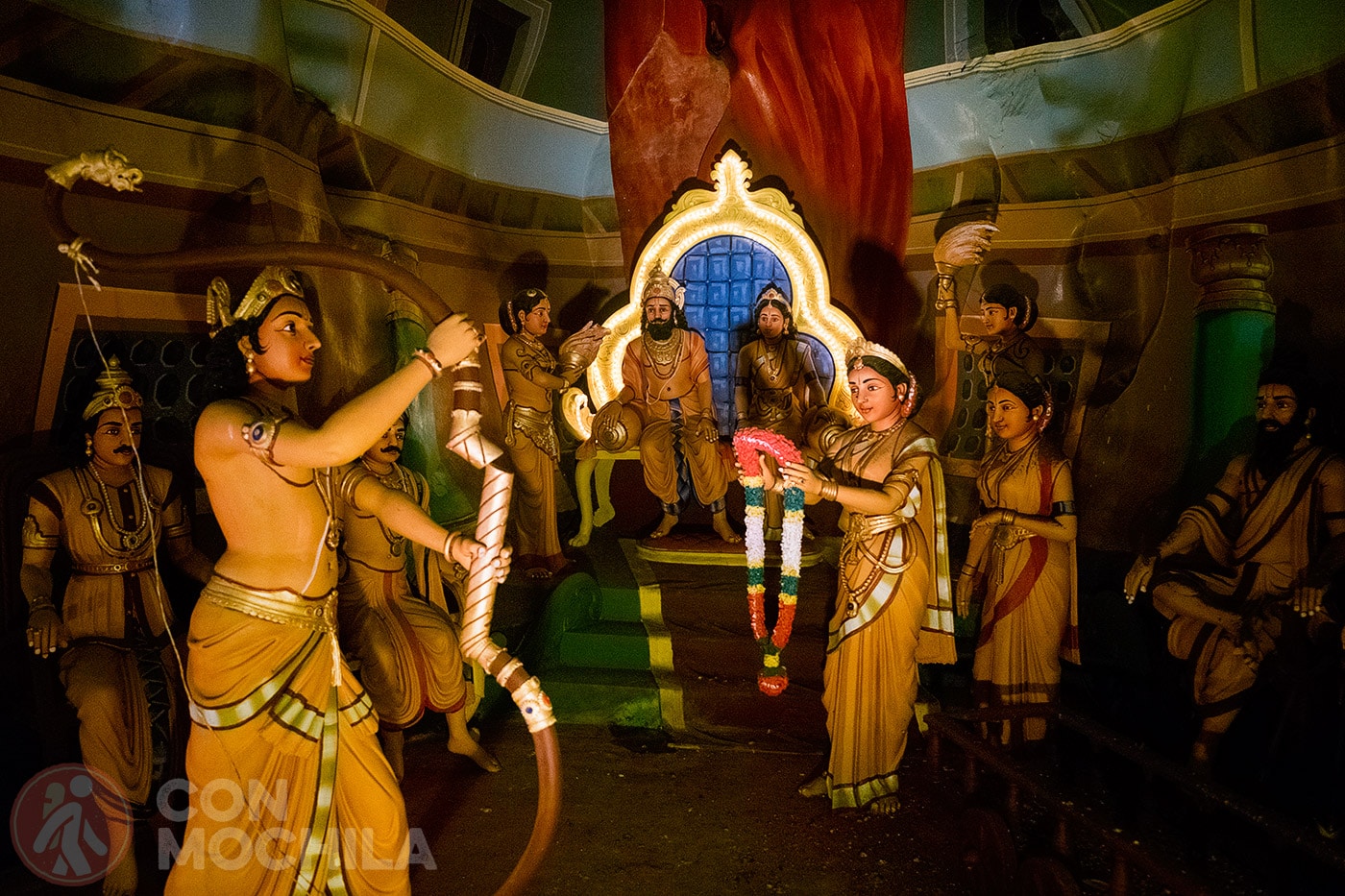
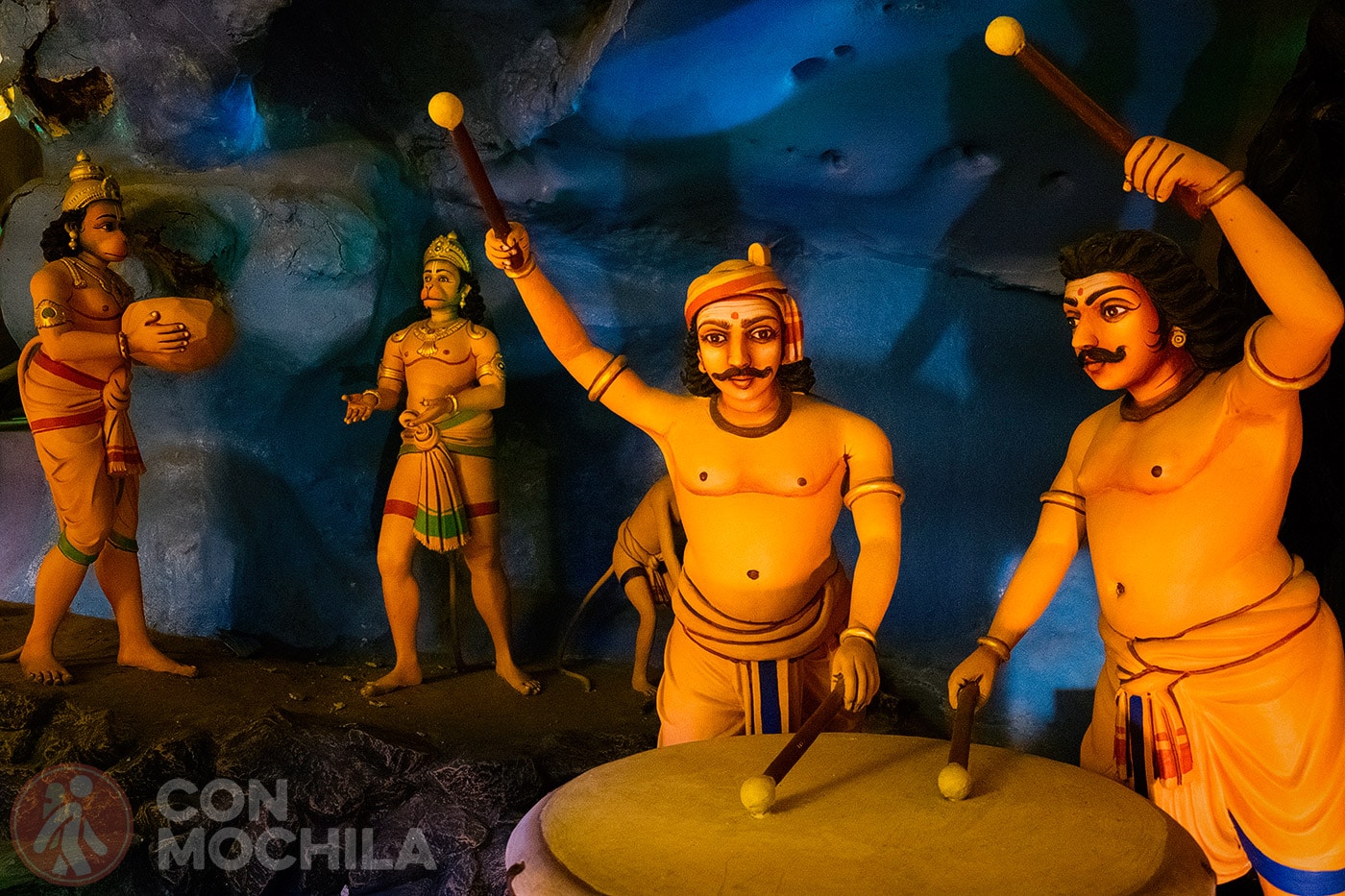
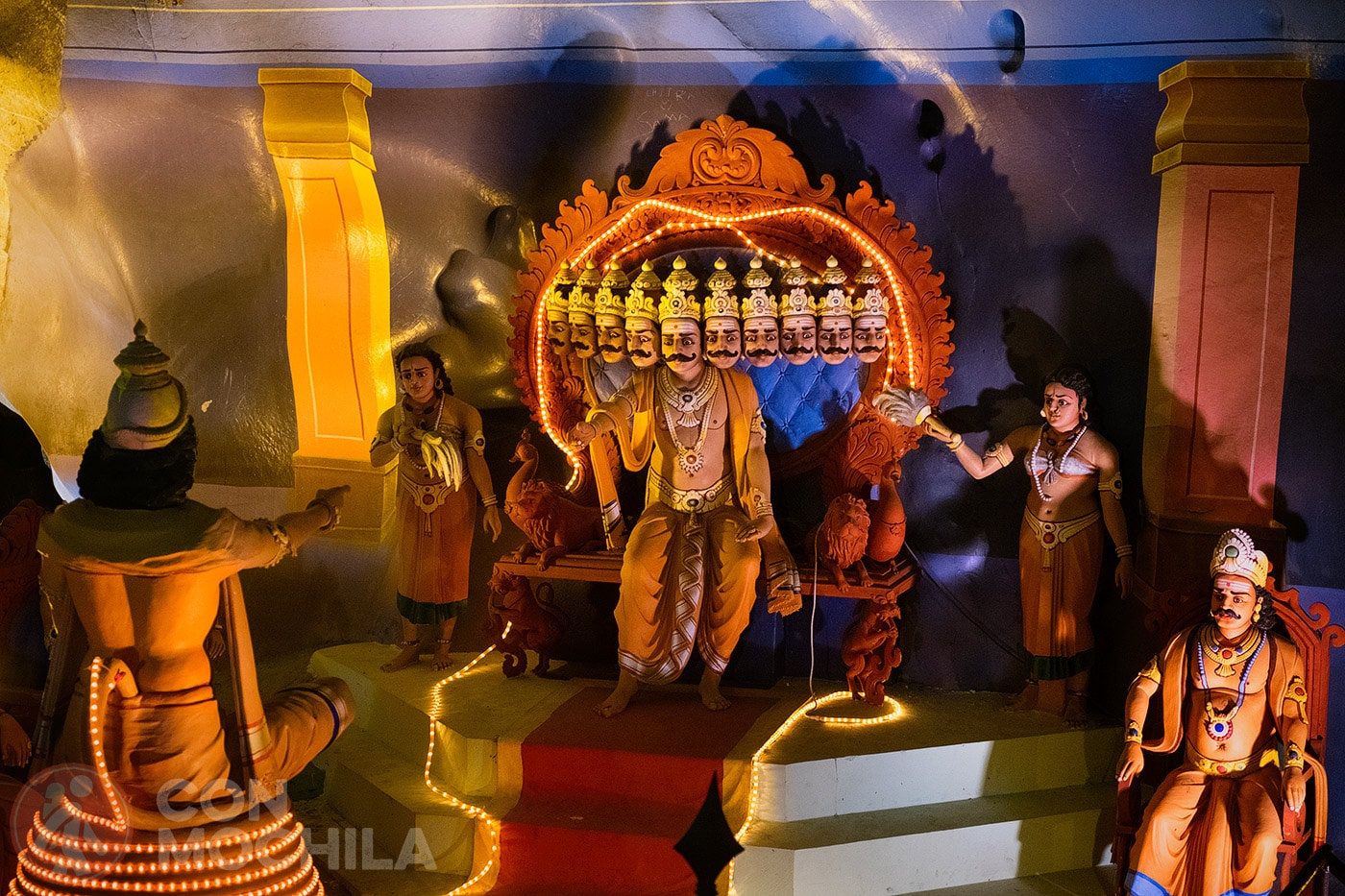
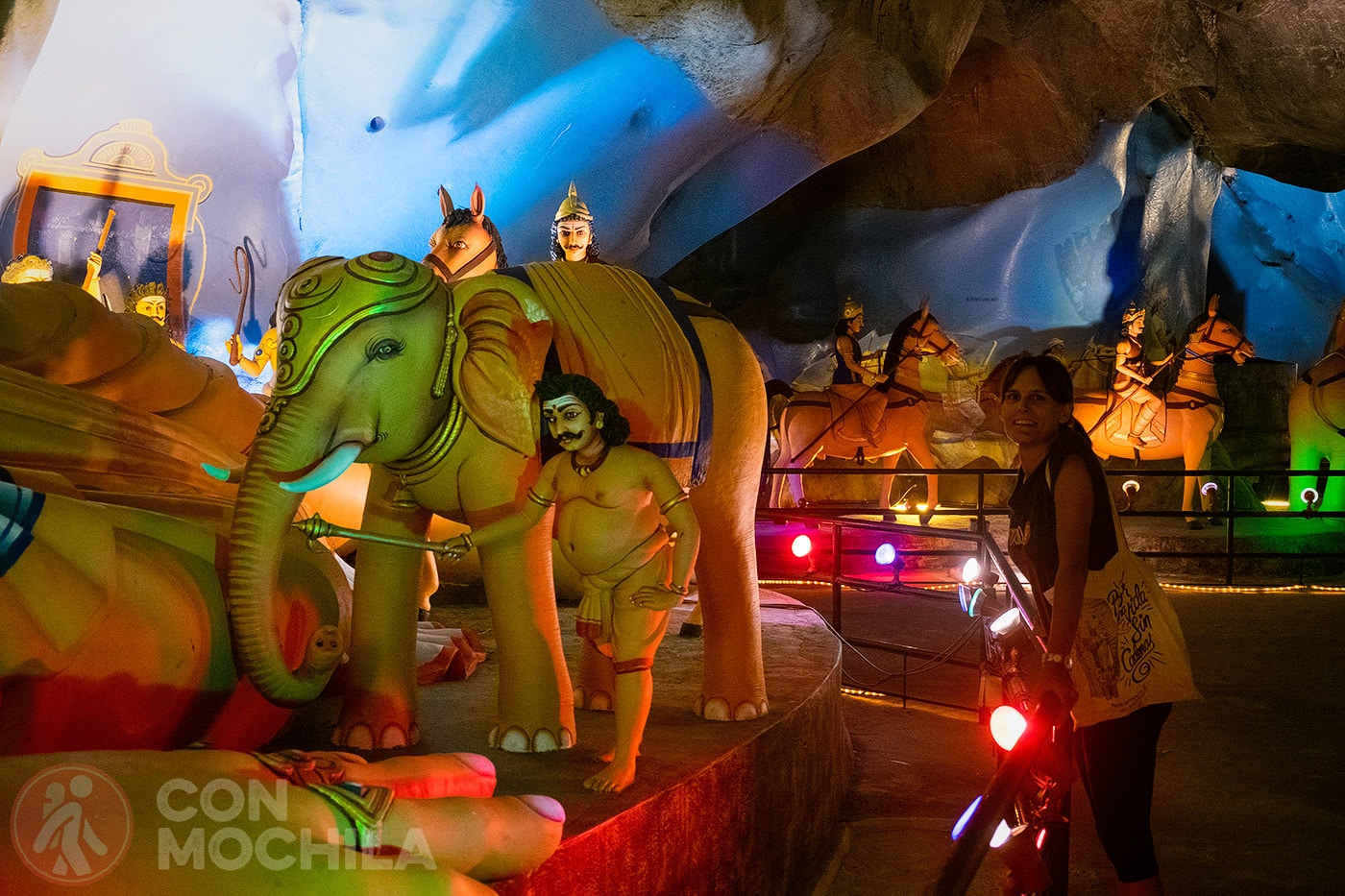
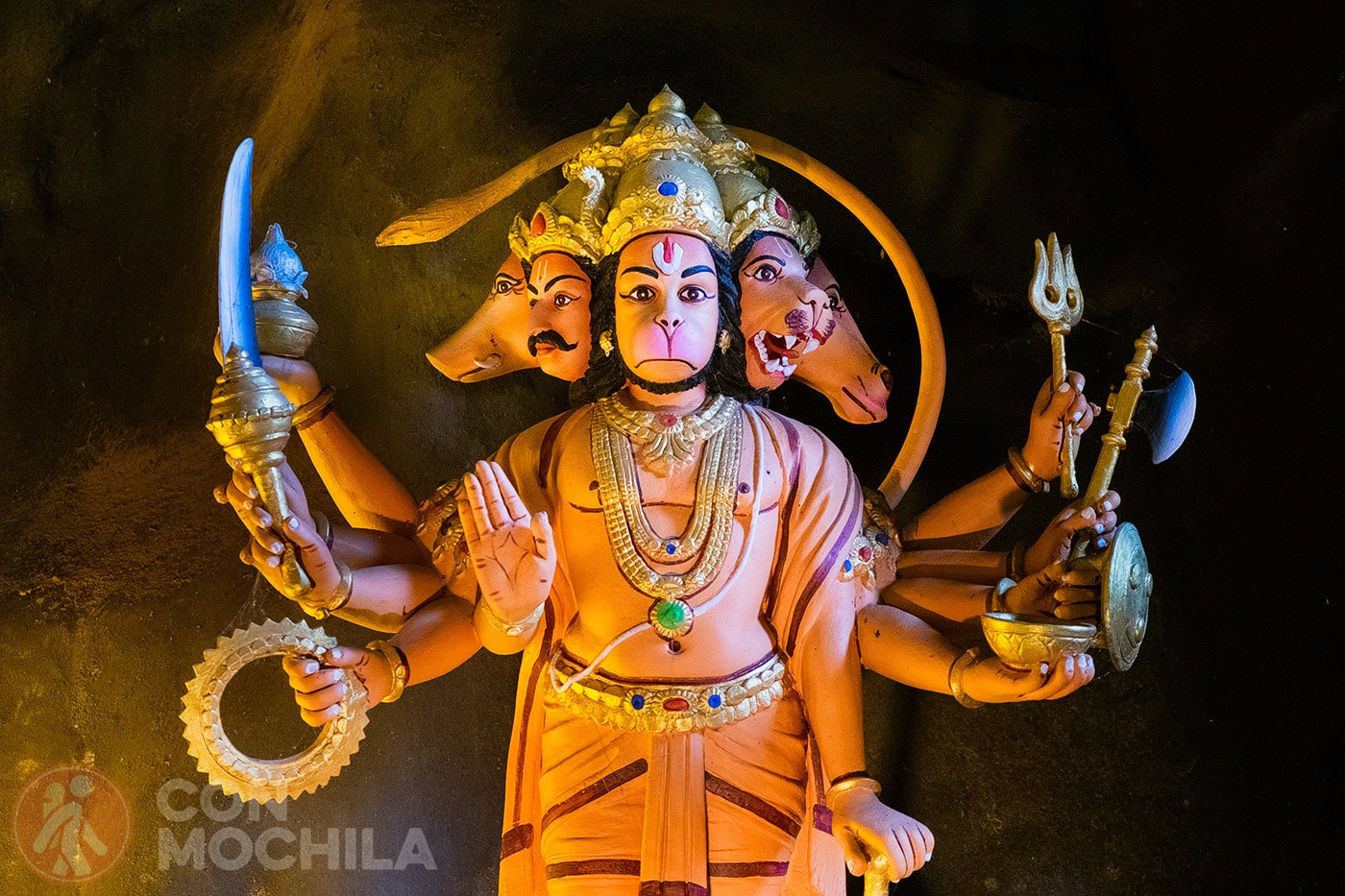
There is an area with a staircase leading to the top and from there you have an view of the cave from above.
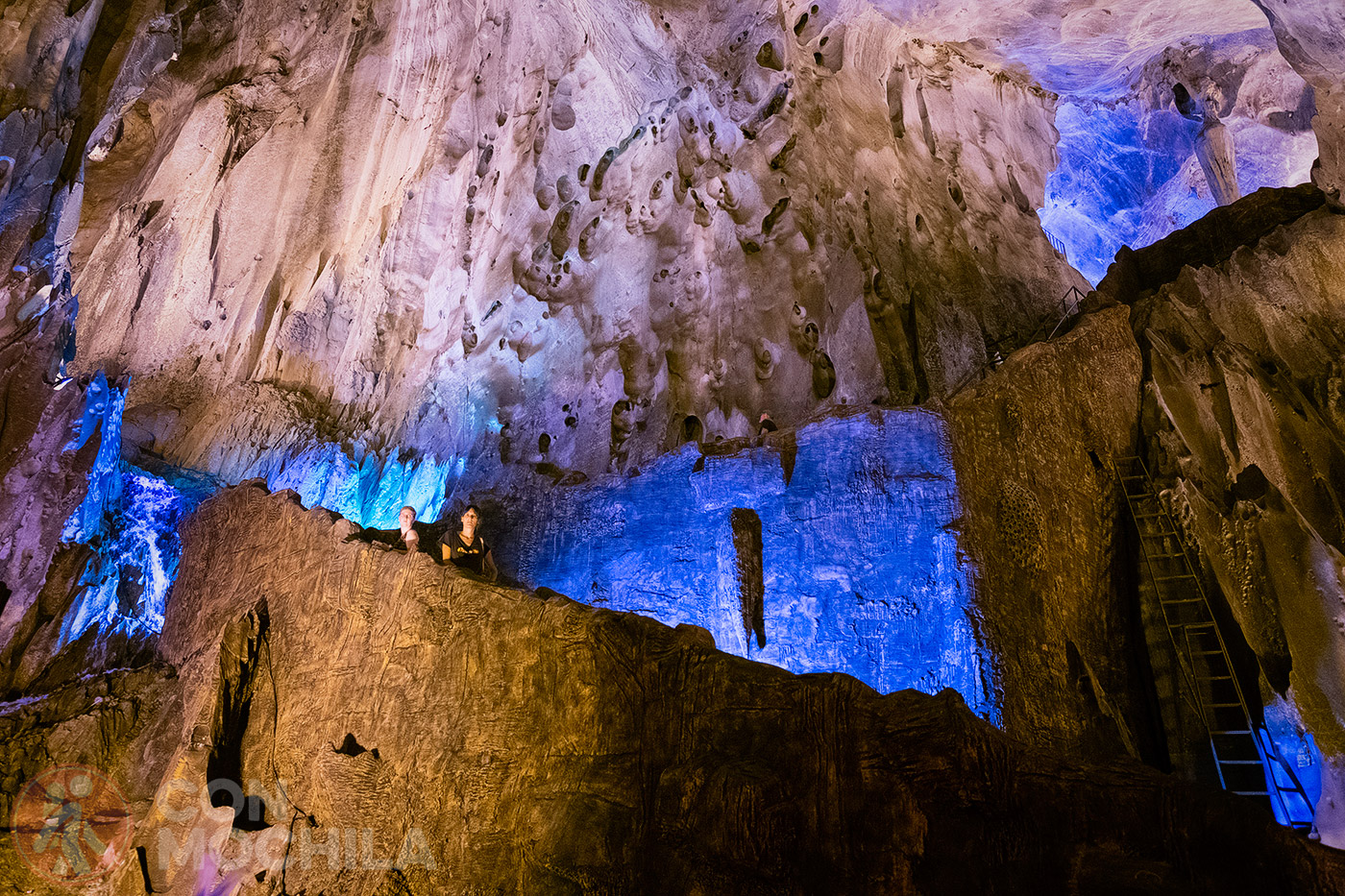

The largest of the Batu Caves, known as Cathedral Cave or Temple Cave, has a 100-metre-high ceiling and ornate Hindu shrines. To reach it, you have to climb the 272 steps that separate you from the ground, and at the base of the cave you will be greeted by the 43-metre-high statue of Murugan, or in other words, the jewel in the crown of the place.
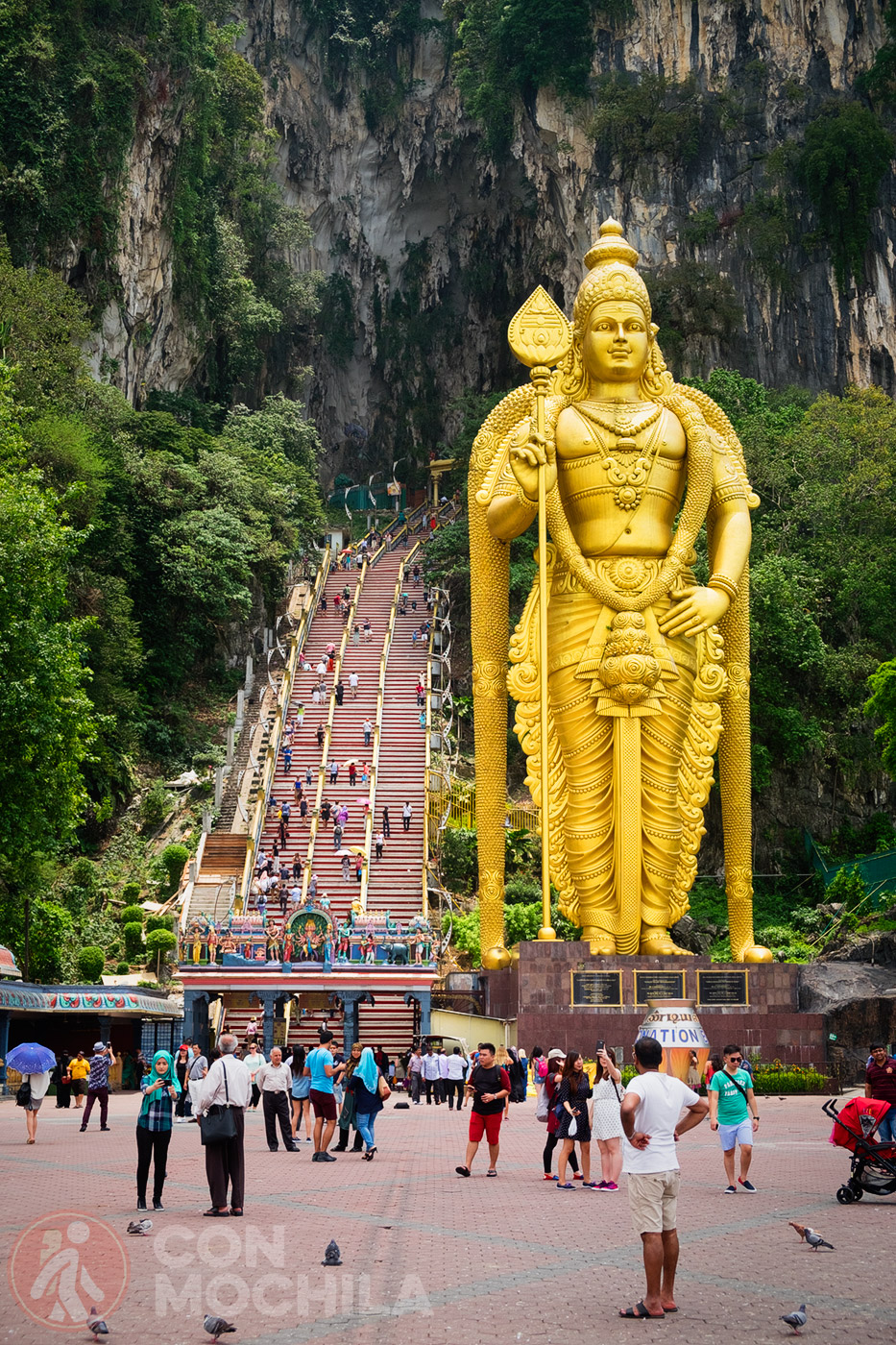
It is the tallest statue of Murugan in the world and took three years to build. It cost about Rs 24 crore and is made of 1,550 cubic metres of concrete, 250 tonnes of steel bars and 300 litres of gold paint brought from neighbouring Thailand.
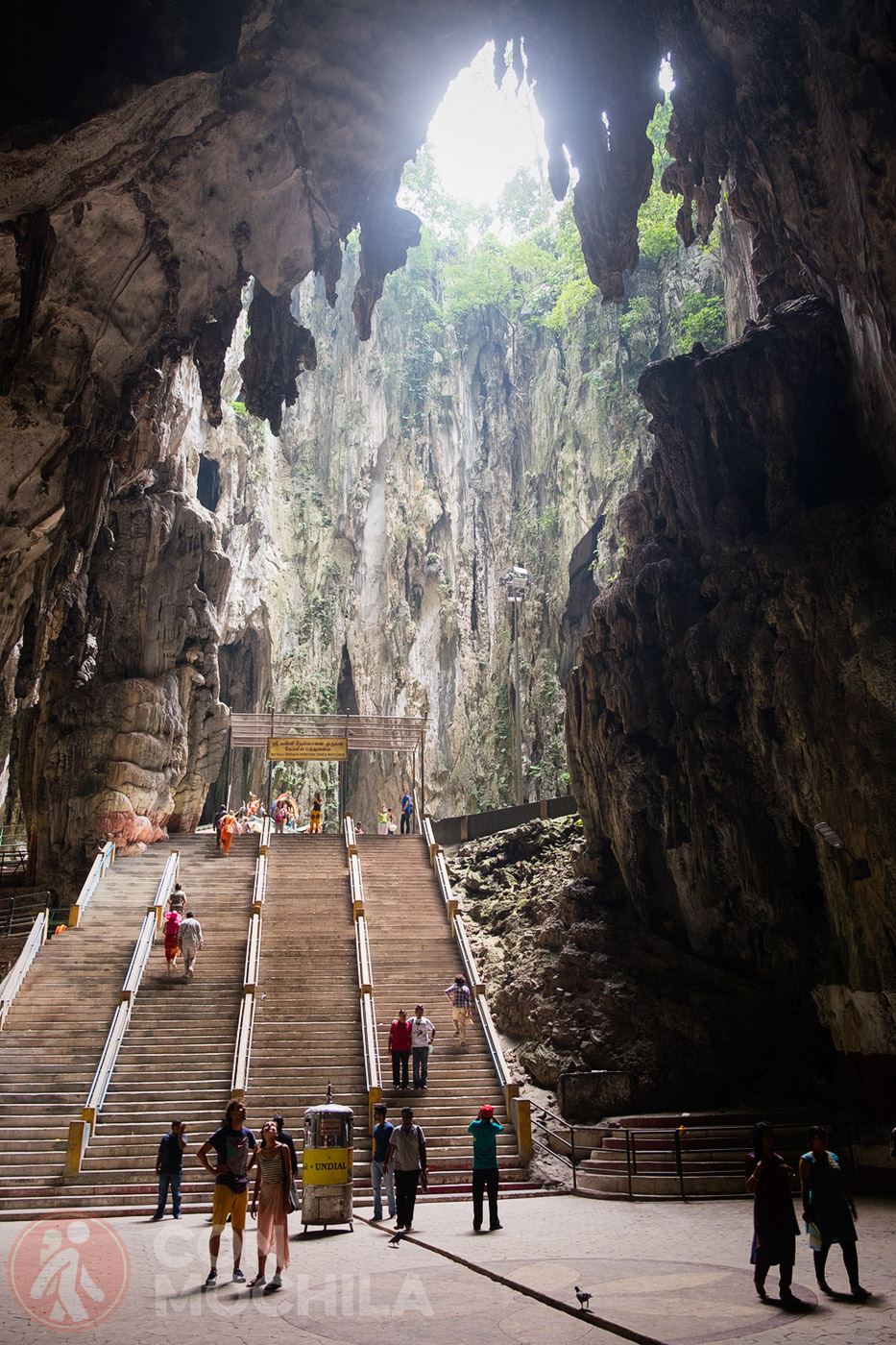
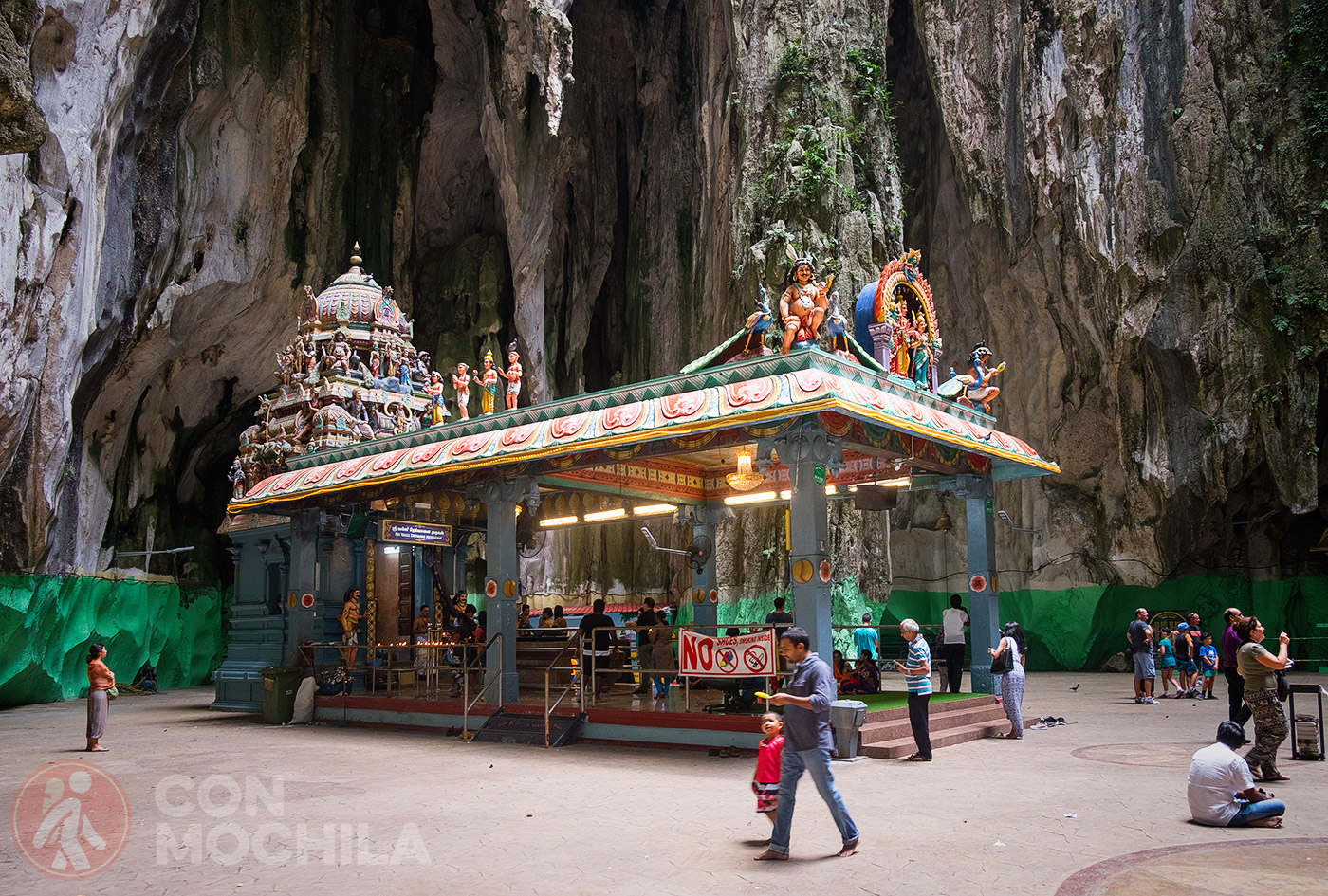
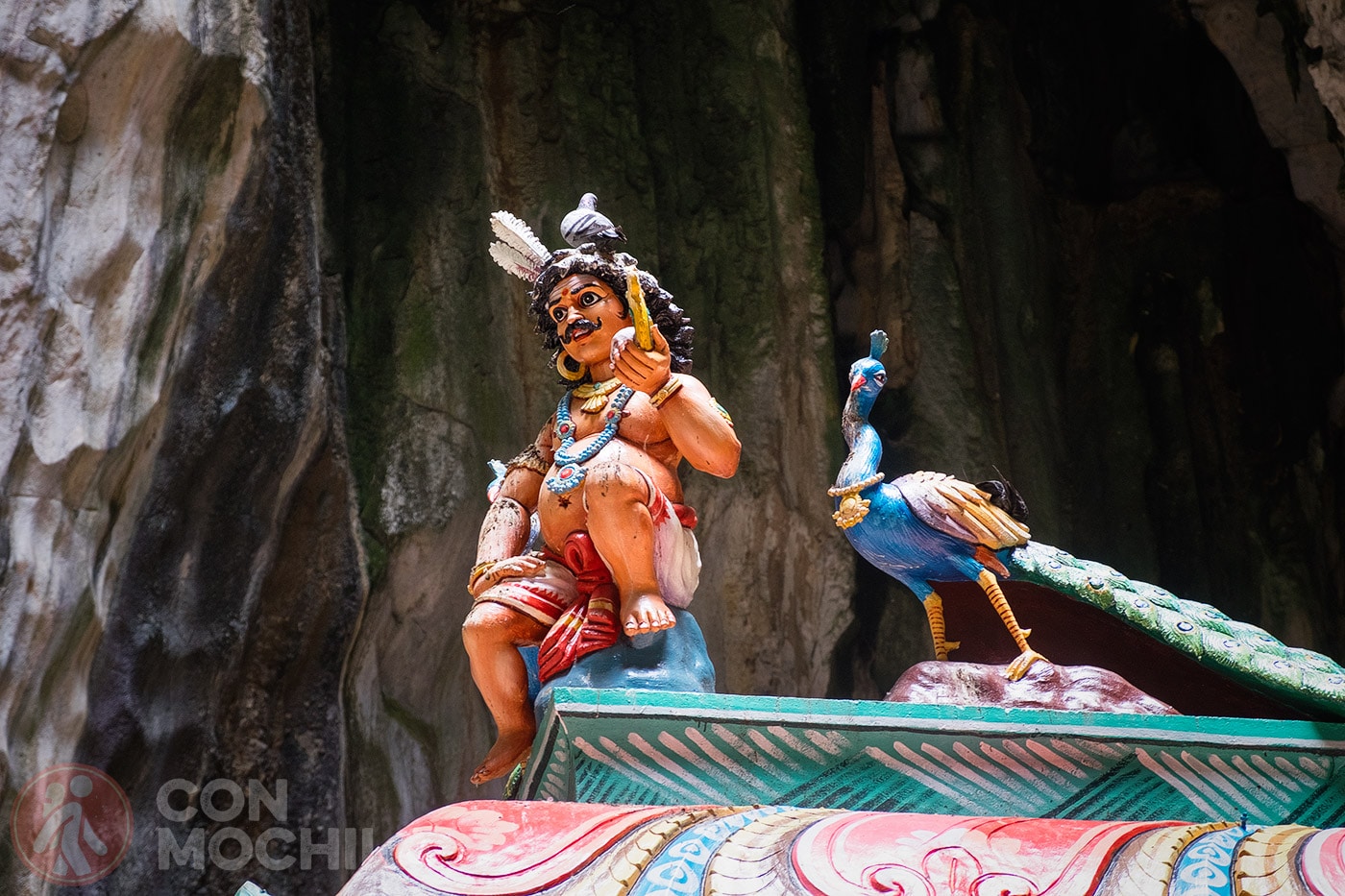
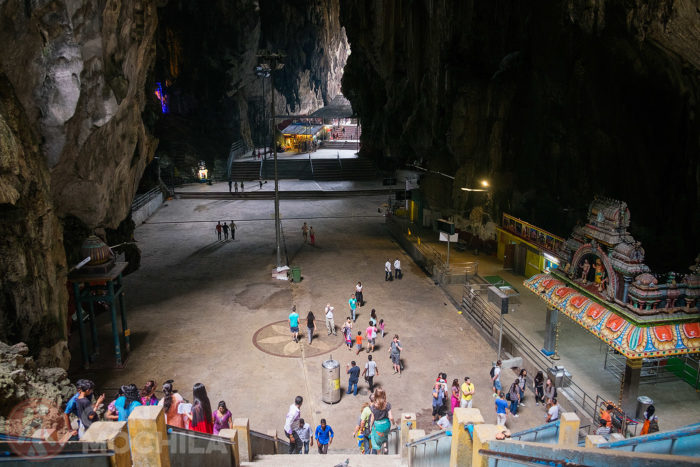
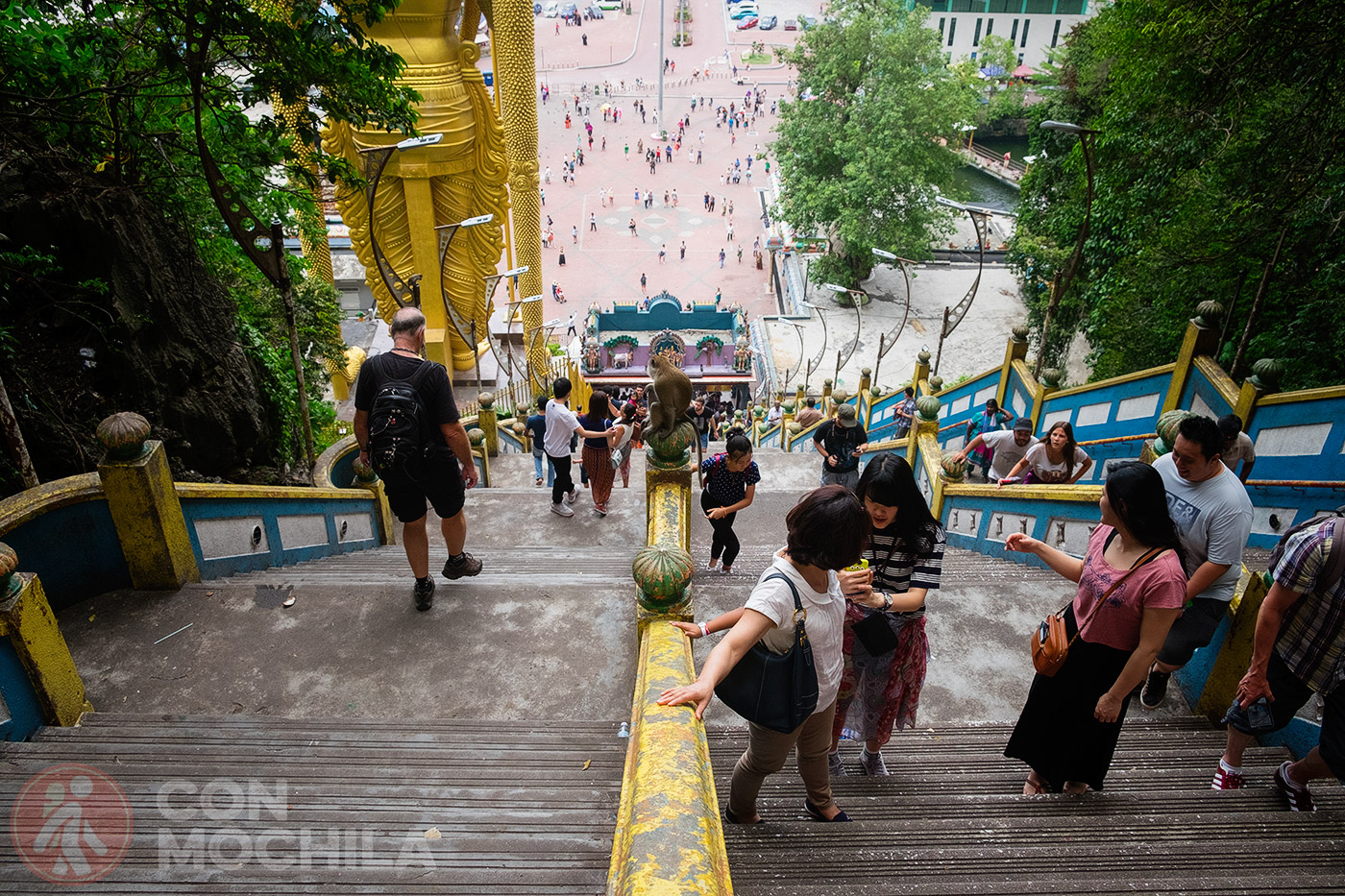
Batu Caves are located 13 km north of Kuala Lumpur in the Gombak district. They are easily accessible by the local train from Kuala Lumpur, or by bus from Chinatown or U6 bus from Titiwangsa.
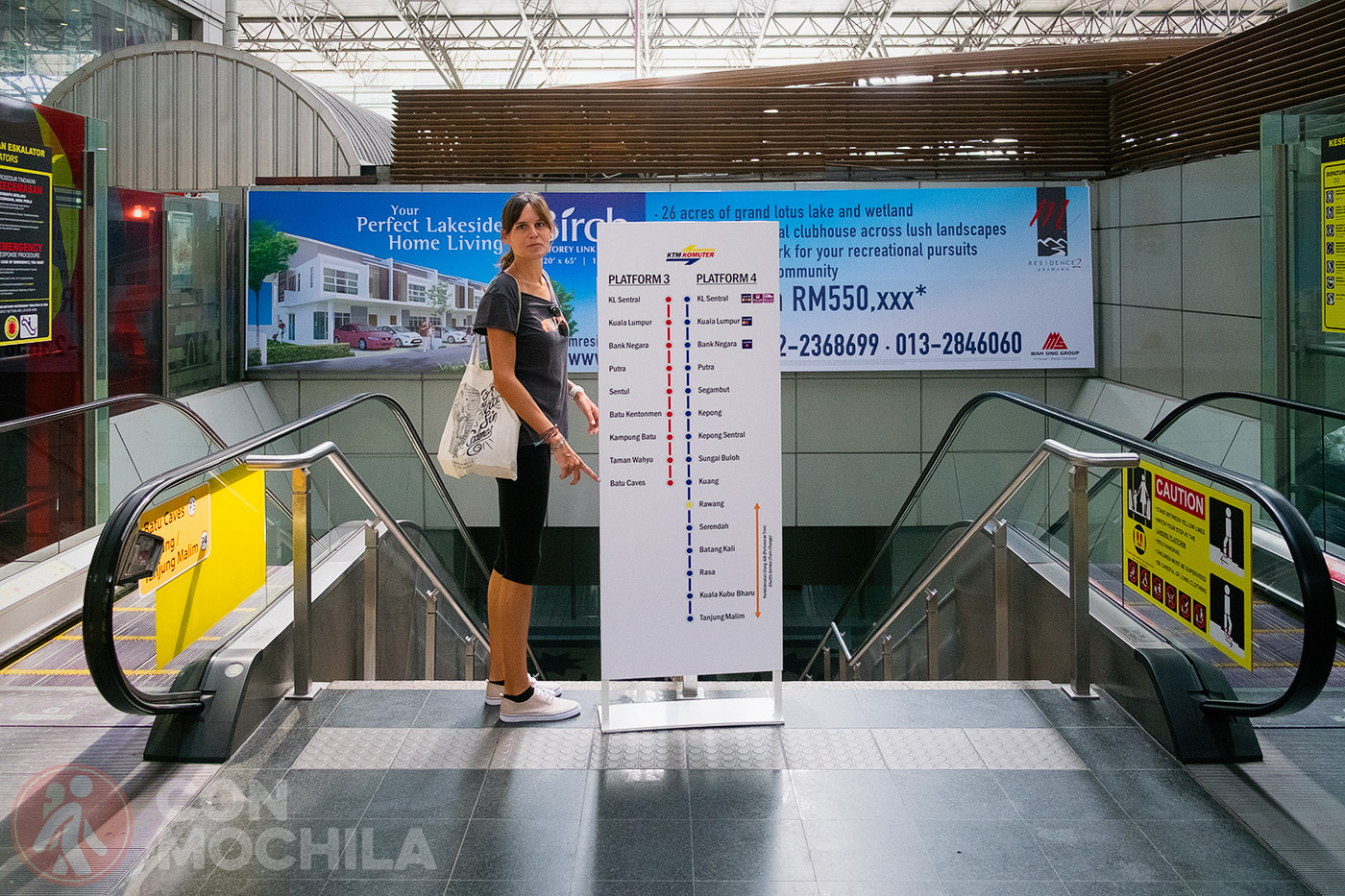
Since Uber and Grab work very well in Kuala Lumpur, this is another perfect option. Prices for buses and trains are no more than 50 euro cents.
On the other hand, you can book a tour to the caves and visit them in a more comfortable way, as they will pick you up at your hotel and bring you back.
Since 1892, the Thaipusam festival has been celebrated there in late January and early February. If you are here around this time, we recommend the all-night pilgrimage from Kuala Lumpur to the caves. Be prepared to witness extravagant displays of worship. The crowds and heat are gruelling, but if there is anywhere outside India that matches the sweet madness there, it is this pilgrimage. An experience of a lifetime.